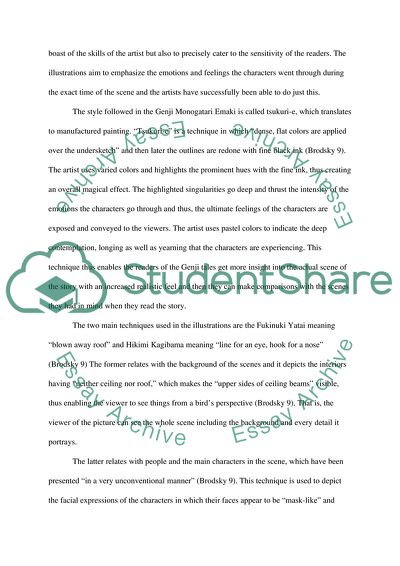Cite this document
(The Japanese Genji Scrolls Coursework Example | Topics and Well Written Essays - 1250 words, n.d.)
The Japanese Genji Scrolls Coursework Example | Topics and Well Written Essays - 1250 words. https://studentshare.org/visual-arts-film-studies/1797675-choose-one-narrative-work-any-medium-and-discuss-the-storytelling-techniques-employed-by-the-artist-and-how-effective-these-were-in-communicating-the-narrative
The Japanese Genji Scrolls Coursework Example | Topics and Well Written Essays - 1250 words. https://studentshare.org/visual-arts-film-studies/1797675-choose-one-narrative-work-any-medium-and-discuss-the-storytelling-techniques-employed-by-the-artist-and-how-effective-these-were-in-communicating-the-narrative
(The Japanese Genji Scrolls Coursework Example | Topics and Well Written Essays - 1250 Words)
The Japanese Genji Scrolls Coursework Example | Topics and Well Written Essays - 1250 Words. https://studentshare.org/visual-arts-film-studies/1797675-choose-one-narrative-work-any-medium-and-discuss-the-storytelling-techniques-employed-by-the-artist-and-how-effective-these-were-in-communicating-the-narrative.
The Japanese Genji Scrolls Coursework Example | Topics and Well Written Essays - 1250 Words. https://studentshare.org/visual-arts-film-studies/1797675-choose-one-narrative-work-any-medium-and-discuss-the-storytelling-techniques-employed-by-the-artist-and-how-effective-these-were-in-communicating-the-narrative.
“The Japanese Genji Scrolls Coursework Example | Topics and Well Written Essays - 1250 Words”. https://studentshare.org/visual-arts-film-studies/1797675-choose-one-narrative-work-any-medium-and-discuss-the-storytelling-techniques-employed-by-the-artist-and-how-effective-these-were-in-communicating-the-narrative.


